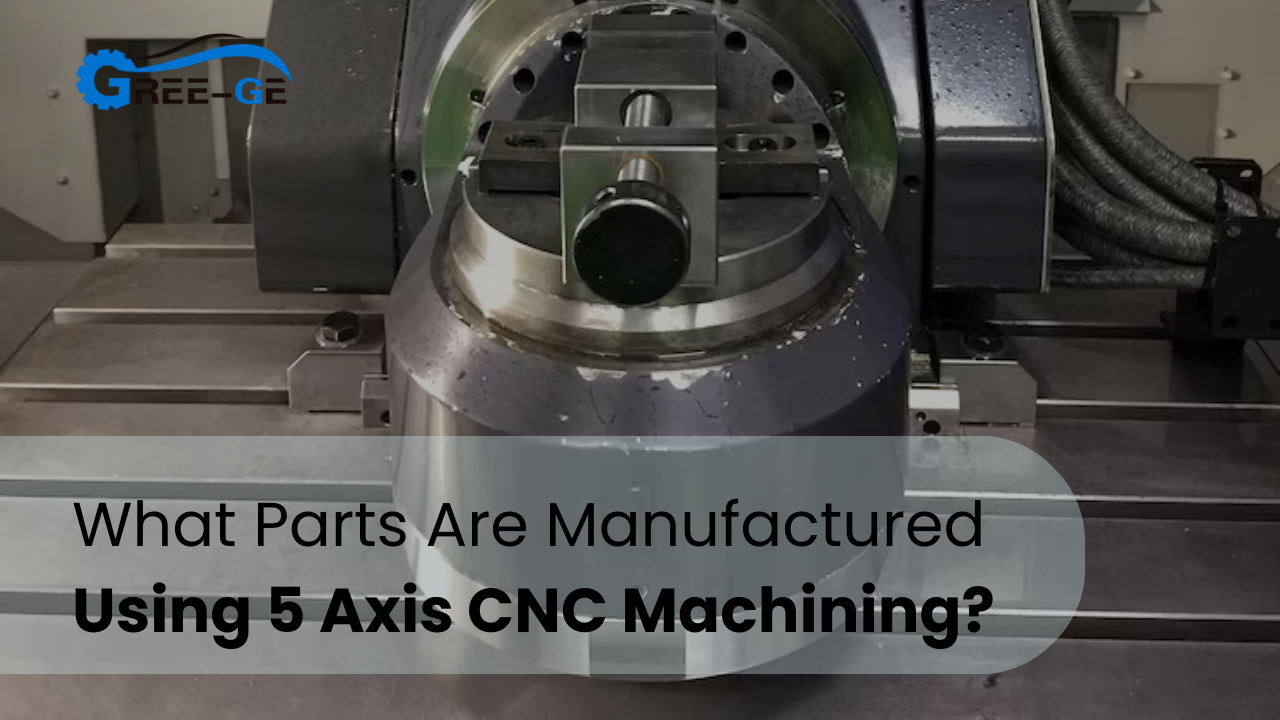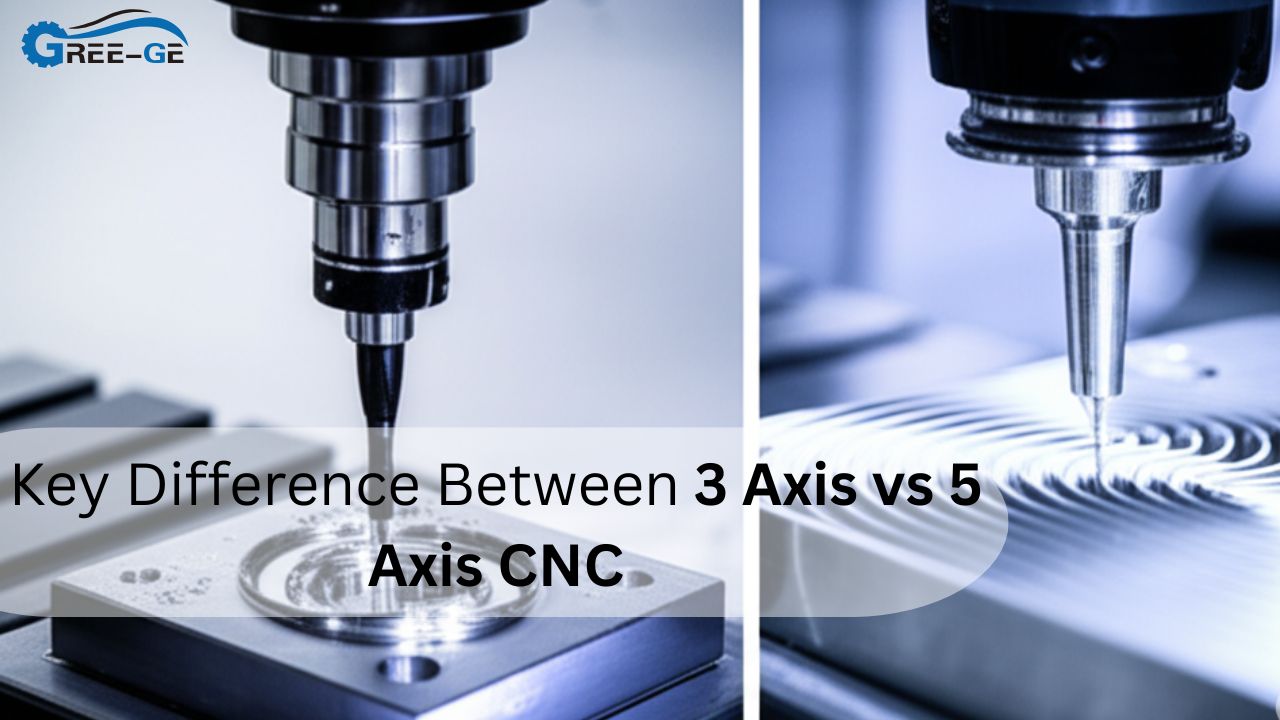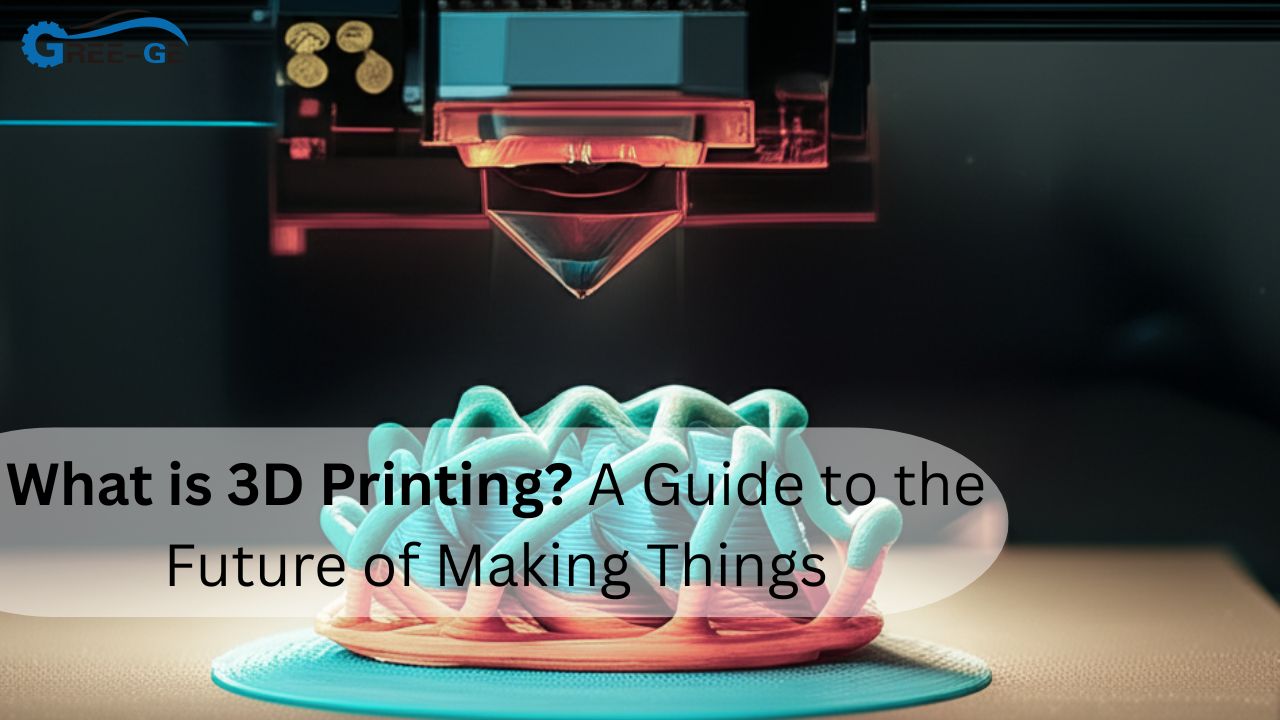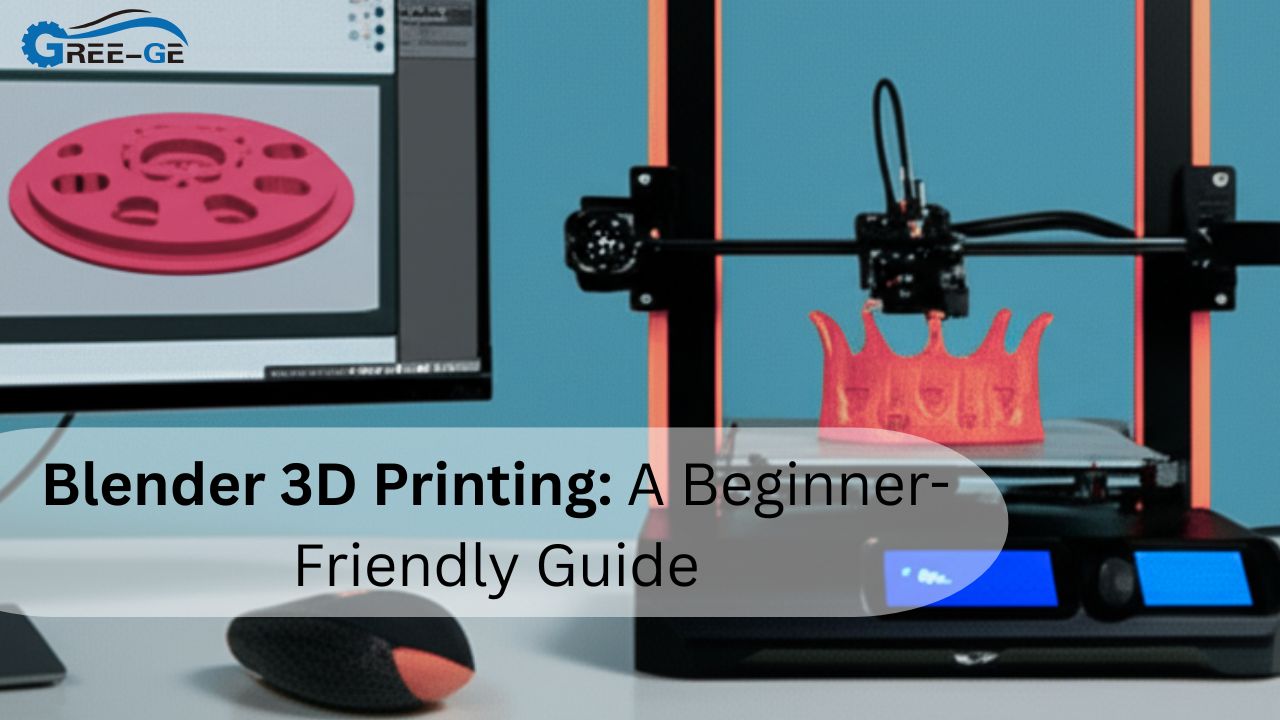You’ve probably watched a maker video where a metal block spins and tilts under a cutter, then pops out looking like a spaceship wing. That mind-bending dance is called 5 axis CNC machining, and right now you’re wondering, “What real parts need all that motion, and could it help my project?” Maybe you’re designing a drone prop, a dental implant, or a custom turbo housing—either way, picking the wrong process will eat up budget and time. By knowing the sweet spots, you’ll skip trial-and-error and head straight for smoother finishes, tighter tolerances, and fewer setups. Five everyday champions of five-axis CNC machining are:
- One-piece turbine blisks for jet engines.
- Anatomically curved titanium bone plates.
- Lightweight aerospace impellers.
- Multi-cavity injection-mold cores.
- Precision optics mounts with angled bores.
Stick around as we dive into how 5 axis CNC machining keeps complex surfaces smooth, where each idea, from machine-tool fundamentals to tight machining tolerances, fits into the picture, and why certain industries can’t live without multi-axis magic.
5 Axis CNC Machining in Aerospace Blisks
Aerospace engine blisks top the list of parts that beg for 5 axis CNC machining. Picture a turbine disc and blade grown from one block of titanium. The blades twist in two directions, so cutting them on a three-axis mill would need dozens of setups, risking chatter and misalignment each time the vise opens. With five coordinated axes, the spindle stays normal to every curved airfoil surface while rotary tables position the part like a seasoned juggler.
The result is smoother finishes, thinner walls, and higher fatigue life because operators avoid manual re-clamping that can bruise the metal grain.
Why Multiaxis Beats Multiple Setups
Every time an operator loosens a vise to rotate a workpiece, the reference zeros shift, and errors creep in. In a part like a blisk, even a ten-micron mismatch can trigger vibration that shreds blades at 30000 rpm. CNC milling keeps the part clamped once, spinning and tilting under the spindle instead of human hands. That approach preserves concentricity between disc and airfoils, locking in balance.
Surface Finish Gains That Save Fuel
Airflow hates bumps. When a cutter stays perpendicular to a blade surface, scallop height drops dramatically, giving the metal a mirror sheen straight off the machine. On the engine test stand, smoother blades reduce turbulence, letting compressors pump more air for the same fuel. Over a jet’s lifetime, those efficiency points turn into millions of saved dollars and lower carbon footprints everywhere. Pilots notice steadier thrust at high altitudes, too.
Cost And Lead-Time Advantages
Multi-setup machining burns money on fixtures, operator labor, and inspection. By finishing a complex part in one program, five-axis machining slashes fixture count to nearly zero. The same cycle mills, drills, and deburrers while the operator grabs coffee. Shorter queues mean turbines reach assembly lines faster, keeping aircraft delivery schedules on track. Tool life expands because cutters meet surfaces at ideal angles, avoiding gouges that demand expensive regrinds. Finance teams love that kind of math.
Medical Implants And Prosthetic Components
Imagine a titanium hip cup with lattice pores that encourage bone to grow inward. Carving those undercuts and organic curves needs the freedom of 5 axis CNC machining, not straight-line drills. Surgeons demand pore size repeatability within fifty microns, so precision CNC machining tools probe the workpiece mid-cycle and adjust offsets automatically. Surgeons rely on these perks:
- Bone-friendly lattices: Ball-nose cutters carve internal pores at perfect angles.
- Pristine surfaces: One clamp means no fingerprints; pass FDA swab tests easily.
- Auto probing: Mid-cycle checks hold ±50 µm on critical fits.
- Matched pairs: Cups and femoral heads machined back-to-back for traceability.
Result? Best of all, the same setup can flip to craft matching femoral heads, streamlining traceability paperwork. That means patients walk sooner, implant recalls drop, and hospitals trust the consistent performance delivered by five-axis milling when lives hinge on metal geometry. Such accuracy also aligns perfectly with stringent FDA device tolerance mandates.
Info: FDA audits favor implants produced in a single validated setup.
Automotive Cylinder Heads And Manifolds
Engine breathing relies on smooth, tapered runners and combustion chambers shaped like science-fiction domes. 5 axis CNC machining makes those contours happen in a single dance, keeping port geometry faithful to CFD models. During CNC machine working sequences, rotary axes swing the casting so ball mills can blend valve seats without ridge lines. Race teams love that because laminar airflow means extra horsepower without extra fuel. In mass production, pallet pools of multi-axis metal cutting machines churn out heads day and night while probes verify seat depth within 20 microns.
By avoiding multiple fixtures, machinists maintain perfect alignment between intake, spark-plug, and exhaust paths—saving gasket headaches later. Automakers also pocket weight savings from thinner walls; every gram shaved helps meet emissions targets. When regulations tighten again, five-axis CNC machining will be ready to trace wilder shapes demanded by engineers, with dependable, repeatable results.
Quick Tip: Use ball-nose cutters with a small stepover to polish ports mid-cut.
Oil And Gas Drill Heads
Down-hole drill heads chew through granite for days while pressure and heat climb. The cutters are welded into helical pockets that twist like a corkscrew—classic candidates for five-axis drilling. Rotary axes let indexable carbide pockets be cut in one positioning, holding rake angles within half a degree. That precision keeps inserts biting cleanly instead of sliding and glazing. Engineers specify hard-facing overlays, so CNC metal cutting machines finish surfaces, then swap to laser cladding heads without unclamping the part.
Such a hybrid workflow protects registration between the cutting face and the gauge pad. Built-in coolant passages also snake through the body; tilting tables guide drills to pierce converging holes that merge deep inside the tool. Understanding these hidden geometries would be impossible without seeing the moving parts of CNC machine working together in real time, which is exactly what five-axis simulators visualize before chips fly. Field crews report longer bit life.
Danger: Never tilt beyond tool-holder limits; a collision here ruins spindle bearings.
Injection-Mold Cavities And Dies
Plastic phone cases, toothbrush handles, and medical syringes all begin life inside steel molds. Those cavities have draft angles, undercuts, and mirror surfaces that demand 5 axis CNC machining for perfect replication. Five-axis motion lets small tapered cutters lean into tight corners, leaving a glassy finish that slashes polishing hours. During in-process monitoring, thermal sensors adjust feeds to stop heat-checking in hardened H13.
Toolmakers rely on high-precision CNC machining to keep each cavity within five microns of its twin, otherwise, seams show up on molded parts.
| Part Type | Industry | Typical Material | Five-Axis Benefit |
| Blisk | Aerospace | Ti-6Al-4V | One-piece build saves 30 % of weight |
| Hip Cup | Medical | Titanium | Undercut lattice improves bone growth |
| Cylinder Head | Automotive | 356 Al | Ports blended for laminar flow |
| Mold Core | Consumer | H13 Steel | Mirror finish straight off the machine |
| Drill Head | Energy | Inconel 718 | Helical pockets milled in one clamp |
Fact: Five-axis milling can cut cycle time by 35 % versus three-axis on complex molds.
Robotics End Effectors And Gear Sets
Robots pick fruit, weld cars, and help surgeons, but only if their wrists move with absolute repeatability. Harmonic drives and custom gripper jaws benefit from 5 axis CNC machining because internal splines and external claws often appear on the same billet. High-ratio gears see micro-teeth milled using the smallest ball mills; high-precision machining keeps their tips within two microns of design. Seeing the rotating parts of CNC machine during simulation helps programmers avoid collisions with chuck jaws while flipping orientations mid-cut. Robots need repeatability; five axes provide:
- Internal splines + external claws: Cut in one program, zero backlash.
- Backlash control: Laser probes verify under 2 arc-minutes.
- Lightweight pockets: Tilted cuts skeletonize arm links without chatter.
Quieter, faster cobots hit million-cycle warranties with ease. Customers notice smoother motion and quieter gearboxes.
Defense Optics Mounts And Missile Fins
Military hardware must function in sandstorms, salt spray, and arctic cold, which means tolerances stay tight after abuse. Optical sight housings, with angled lens seats and battery compartments, are machined from one billet via 5 axis CNC machining to avoid water-leak joints. Similarly, missile fins feature compound airfoils that need constant tool tilt to remain razor thin without warping. Programmers load aluminum blanks into CNC cutting machines equipped with pallet changers so production can continue during shift change. Mission-critical gear benefits from:
- Water-tight housings: Angled lens seats and O-ring grooves milled together.
- Razor-thin fins: Compound airfoils cut without warping.
- On-board torque sensing: Auto tool change before chatter mars surfaces.
Reliability stays high, even in sand, salt, or sub-zero cold. In short, five-axis capacity translates into mission success where maintenance windows are rare and stakes are incredibly high. Troops trust that reliability when seconds decide the outcome daily.
Consumer Electronics Casings And Heatsinks
When you pick up a slim laptop, the cool metal unibody feels premium. That sensation is crafted by 5 axis CNC machining, which sculpts speaker grills, hinge pockets, and vent slots in one swoop. Live CNC machine working cameras let designers sign off surface patterns remotely before production ramps. Because cutters can tilt, wall thickness drops to half a millimeter without chatter, making devices lighter.
Heat-sink fins grow tall and thin; five-axis simultaneous passes remove material between fins without bending them. Smartphones also benefit: angled SIM-tray ramps and antenna channels appear automatically during the same cycle. Consumers may never notice the hidden precision CNC machining tricks, but they feel the difference when their gadgets stay cool and survive drops. Seasonal color refreshes only require toolpath tweaks, not new tooling, saving marketing budgets everywhere annually.
Motorsports One-Off Engine Parts
Race weekends leave no time for tooling delays. When a driver asks for a new intake plenum overnight, 5 axis CNC machining answers the call. Mechanics scan the old part, tweak the CAD, and fire code to CNC metal cutting machines before dinner. Need a new intake by Sunday? Five-axis mills can:
- Scan, cut, race: CAD to track in 24 hours.
- Blend bores & bosses: Flanges, injector seats, and runners in one clamp.
Lap times drop before the green flag. Sponsors cheer louder when rapid innovation translates into podium finishes worldwide. This level of precision CNC machining wins races before the flag drops.
Artistic Sculptures And Architectural Models
Not all five-axis magic lands in factories; some ends up in galleries. Artists feed cloud-sourced meshes into 5 axis CNC machining centers to carve marble, wood, and aluminum with impossible undercuts. Dynamic tool orientation preserves fine detail in faces and folds, sparing months of hand chiseling. Architects rely on the same tech to mill terrain models, letting clients touch canyon ridges and tower silhouettes. Seeing the moving parts of CNC machine inspires students who never imagined robots could craft art.
Meanwhile, high-speed spindles swap to ball-nose bits that polish surfaces straight from code, ready for powder-coat or patina. By shrinking fabrication time, creators spend more energy on storytelling. Collectors walk away amazed, proof that engineering precision fuels imagination as much as industry. CNC machine working demonstrations at maker fairs draw crowds, blending education with spectacle, and reminding everyone that complex motion paths can also carve beauty alongside utility everywhere.
Conclusion
We have zipped through jet engines, bone plates, race cars, and even art, and one truth sticks if a part has curves or critical alignments, 5 axis CNC machining is the superhero tool for the job. By letting cutters approach from any direction, it slashes setups, polishes surfaces, and guards tolerances that keep planes aloft and patients healthy. Remember the key industries, note each advantage, and match your design to the right machine strategy.
Do that and your next prototype—whether titanium, aluminum, or hardwood—will leave the spindle finished, balanced, and ready to shine. Five coordinated axes, one happy project.
FAQs
Is a five-axis always more expensive than a three-axis?
Tooling rates can be higher, but single-setup efficiency often balances the budget for complex shapes.
Can aluminum benefit from five-axis machining?
Yes—tilt and rotary moves let cutters skim thin walls without chatter, perfect for drone frames and laptop shells.
What software do I need to program five-axis paths?
Most CAM suites offer advanced modules; look for collision checking and machine simulation features.
How small a part can a five-axis mill handle?
With micro-spindles and fine probes, shops routinely machine medical screws under two millimeters in diameter.







